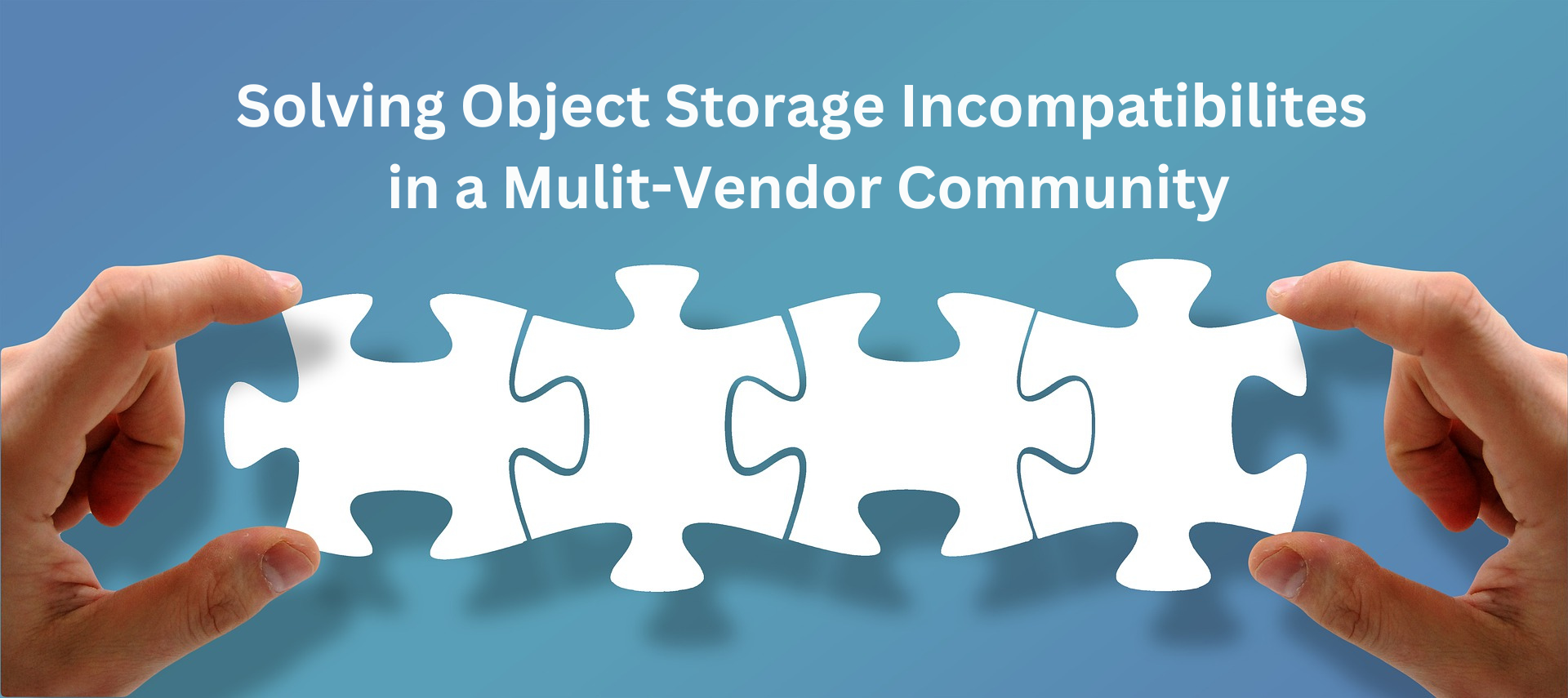- Implications on client applications
- Complexity and variety of APIs
- Access control mechanisms
- Performance and scalability requirements
- Real-world incompatibilities found in various object storage implementations
- Missing or incorrect response headers
- Unsupported API calls and unexpected behavior

Solving Cloud Object Storage Incompatibilities in a Multi-Vendor Community
Oct 25, 2024

Computing in Space: Pushing Boundaries with Off-the-Shelf Tech
Oct 21, 2024

Can commercial off-the-shelf technology survive in space? This question is at the heart of Hewlett Packard Enterprise's Spaceborne Computer-2 Project. Dr. Mark Fernandez (Principal Investigator for Spaceborne Computer Project, Hewlett Packard Enterprise) and Cameron T. Brett (Chair, SNIA STA Forum) discuss this project with SNIA host Eric Wright, and you can watch that full video here, listen to the podcast, or you can read on to learn more.
By utilizing enterprise SAS and NVMe SSDs, they are revolutionizing edge computing in space on the International Space Station (ISS). This breakthrough is accelerating experiment processing, like DNA analysis, from months to minutes, and significantly improving astronaut health monitoring and safety protocols.
The Role of SAS in Space Serial Attached SCSI (SAS) technology, known for its high performance and reliability, has been a cornerstone in this mission. SAS has been evolving for over 30 years, offering enhancements in speed, functionality, and durability. For this project, the combination of Value SAS (single-port, cost-effective, low power SAS drives) and Enterprise SAS SSDs (high-performance, dual-port drives) provided the perfect balance of reliability, power efficiency, and speed. On the ISS, resilience is critical. The drives must withstand high radiation levels and cosmic events while continuing to operate with minimal or no disruption. SAS drives, especially Enterprise-class SSDs, bring proven durability with built-in redundancy and error-correction capabilities. SAS technology offers sophisticated monitoring tools that allow the Spaceborne Computer-2 to track the health of drives daily, flagging potential issues before they become catastrophic. This self-healing functionality ensures that storage continues without failure, even in the harshest environments.
Resilience and Sustainability in Space Beyond performance, SAS storage also plays a key role in sustainability. By extending the lifecycle of hardware through software enhancements and redundant configurations, the project reduces the need for frequent hardware replacements—a crucial advantage in space, where replacing components is far more challenging than on Earth. This philosophy of extending hardware life through SAS technology mirrors trends in earthbound enterprise applications, where companies seek to lower costs and emissions by maximizing the use of existing infrastructure.
Real-World Applications: DNA Analysis and Astronaut Safety One of the project's key successes has been reducing the time for DNA sequencing onboard the ISS from months to minutes, allowing astronauts' health to be monitored daily. Another achievement was the development of AI software that analyzes astronauts’ glove conditions post-spacewalk, reducing the time needed for analysis from five days to just 45 seconds. These advancements are made possible by the combined power of SAS SSDs, which store massive data sets, and NVMe drives, which accelerate processing.
Looking Ahead: The Future of SAS in Space As space exploration advances, the Spaceborne Computer-2 Project continues to evolve, and SAS technology is expected to continue playing a prominent role. With Spaceborne Computer-3 on the horizon, this next iteration promises twice the storage capacity and GPU capabilities, while using half the electrical power. The new generation of SAS SSDs, tailored specifically for the extreme conditions of space, will continue to push the boundaries of what commercial technology can achieve beyond Earth's atmosphere.
Leave a Reply
Unveiling the Power of 24G SAS: Enabling Storage Scalability in OCP Platforms
Oct 2, 2024

By Cameron T. Brett & Pankaj Kalra In the fast-paced world of data centers, innovation is key to staying ahead of the curve. The Open Compute Project (OCP) has been at the forefront of driving innovation in data center hardware, and its latest embrace of 24G SAS technology is a testament to this commitment. Join us as we delve into the exciting world of 24G SAS and its transformative impact on OCP data centers.
OCP's Embrace of 24G SAS The OCP datacenter SAS-SATA device specification, a collaborative effort involving industry giants like Meta, HPE, and Microsoft, was first published in 2023. This specification laid the groundwork for the integration of 24G SAS technology into OCP data centers, marking a significant milestone in storage innovation.
The Rise of SAS in Hyperscale Environments While SAS has long been associated with traditional enterprise storage, its adoption in hyperscale environments is less widely known. However, SAS's scalability, reliability, and manageability have made it the storage interface of choice for hyperscale and enterprise data centers, powering some of the largest and most dynamic infrastructures in the world.
The Grand Canyon Storage Platform At the Open Compute Project Global Summit conference in October 2022, the Grand Canyon storage platform made its debut, showcasing the capabilities of 24G SAS technology. This cutting-edge system, built around a 24G SAS storage architecture, offers high storage capacity, with either SAS or SATA hard disk drives (72 slots), designed to meet the ever-growing demands of modern data centers.
Exploring the Scalability of SAS One of the key advantages of SAS is its unparalleled scalability, capable of supporting thousands of devices seamlessly. This scalability, combined with SAS's reliability and manageability features, makes it the ideal choice for data centers looking to expand their storage infrastructure while maintaining operational efficiency.
Delving Deeper into SAS Technology For those eager to learn more about SAS technology, a visit to the SNIA STA Forum provides a wealth of resources and information. Additionally, exploring videos on the SAS Playlist on SNIAVideo YouTube Channel offers insights into the capabilities and applications of this innovative storage interface.
Conclusion As OCP continues to drive innovation in data center hardware, the embrace of 24G SAS technology represents a significant step forward in meeting the evolving needs of modern data centers. By harnessing the power of SAS, OCP data centers are poised to achieve new levels of scalability, reliability, and performance, ensuring they remain at the forefront of the digital revolution. Follow us on X and LinkedIn to stay updated on the latest developments in 24G SAS technology.







Leave a Reply